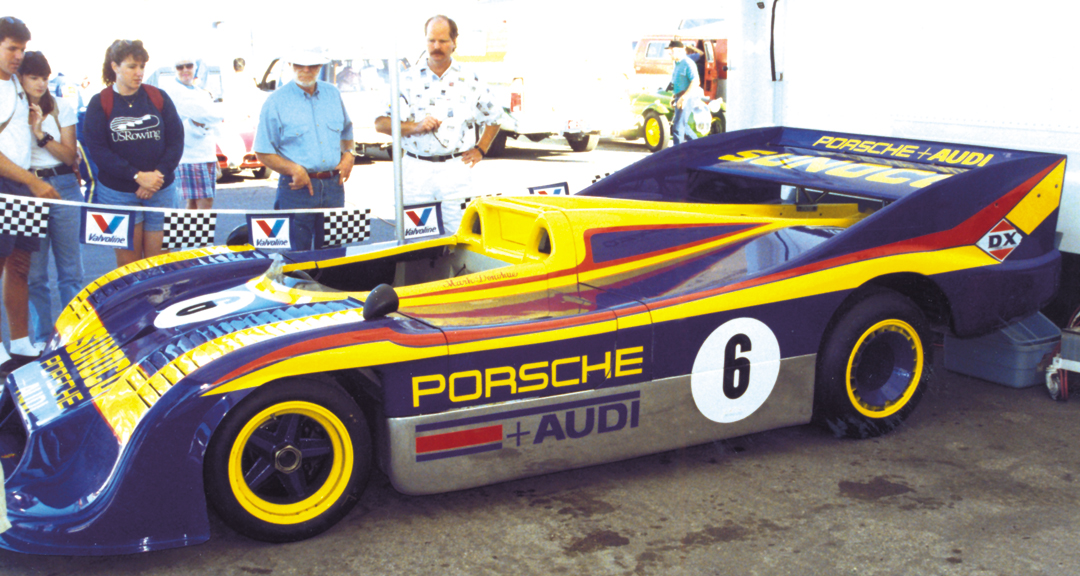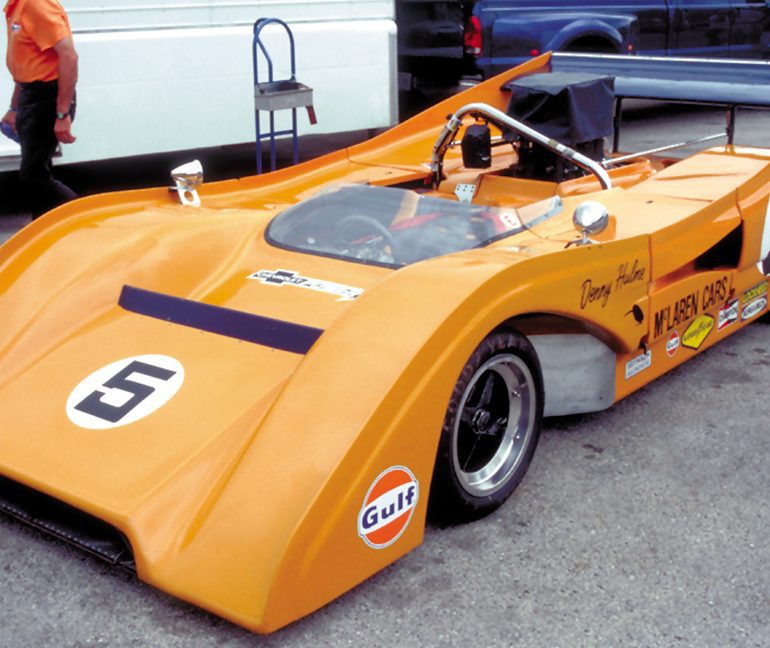The Canadian American Challenge Cup (Can-Am) was co-sanctioned by the SCCA and CASC; it was a series nicknamed the “unlimited” series. Although there was a basic set of rules, the cars had to be two-seaters with bodywork covering the wheels, doors, a windscreen, brake lights and meet various safety requirements.
There was no regulation on the cars’ dimensions, minimum weight, materials used or size of the tires. This was all open to the creativity of the designer.
The nickname “unlimited” came from the regulations allowing engines of unlimited displacement and number of cylinders, i.e., horsepower. Essentially, this was the open sports racing car series and it became a hotbed of new technology and racing car design.
It took place from 1966 until 1974 with races in Canada and America. At its peak it was a 10-race series featuring cars from BRM, Chaparral, Ferrari, Lola, March, McLaren, Porsche and Shadow. Some of the famous drivers who took part in the Can-Am include Amon, Donohue, Follmer, Gurney, Hill, Hulme, McLaren, Oliver, Revson, Scheckter, Siffert, Stewart and Surtees.
It was partly known as the “Bruce and Denny Show” because of their five straight years of winning championships racing McLarens. It started with a Lola championship and ended with complete domination by Porsche with the 917/10 and 917/30.
Today there is a historic Can-Am group which organizes races across the country, including some very popular Can-Am reunion events.
The value of these cars today is determined largely by their provenance, whether a team car or a private car, the race history and the condition.
1971 McLaren M8F

1973 Porsche 917/30

Criteria Used For Assessing Valuations for this Guide:
- Degree of Originality
- Overall Condition, Restoration
- Technology, Design, Coachbuilder
- Production Numbers/Rarity
- Competition History
- Ownership History, Documentation
- Modern Event Eligibility
Regional Variances
The prices stated in this guide are based on U.S. values. The values of historic racing cars can vary as much as 25%-35% in other countries, depending on local market appeal, currency rates, import duties, and VAT. Most of the time, we are able to document known sales or closed escrows, as they say in real estate. When this is not possible, a logical estimate of the car’s value is given, based on its sales history and relationship to cars of its type.
The prices stated in this guide are based on U.S. values. The values of historic racing cars can vary as much as 25%-35% in other countries, depending on local market appeal, currency rates, import duties, and VAT.
LEVEL |
VALUATION CATEGORIES |
|---|---|
I |
The best combination of all criteria. |
II |
Satisfies mid-range of criteria. |
III |
In need of restoration. Meets only a few points of criteria |




